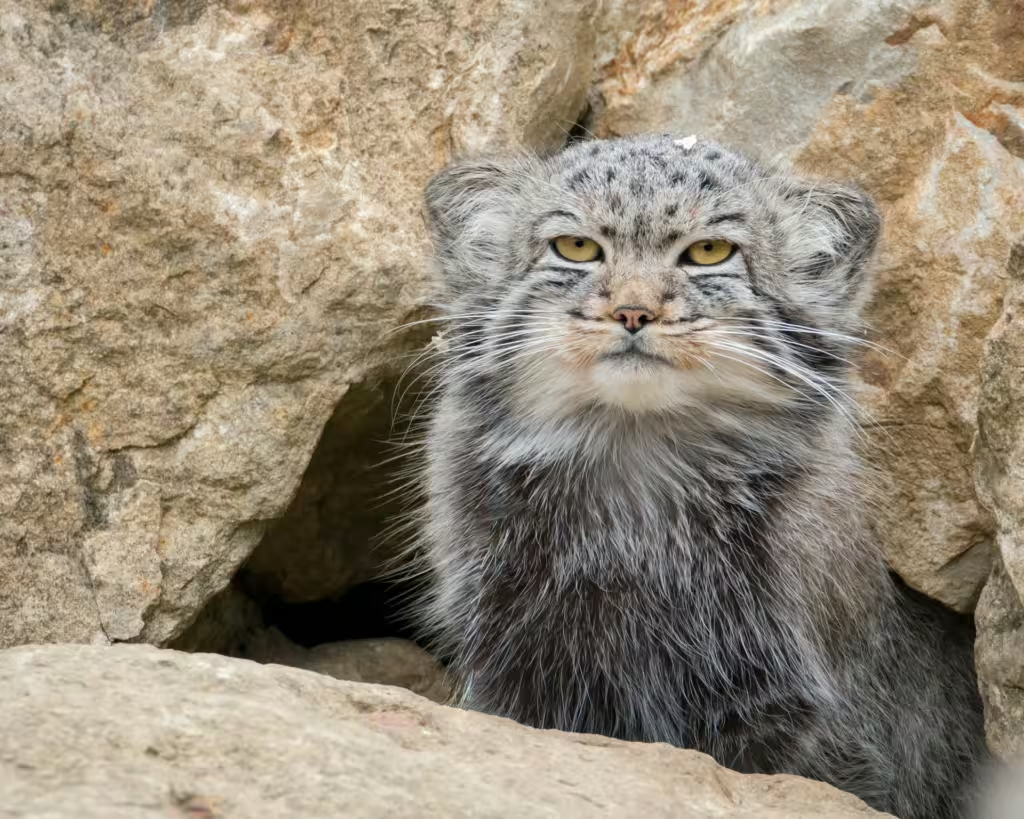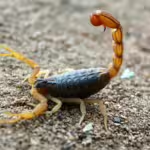When we think about the world’s wild cats, we tend to think of the big, popular ones; cats like tigers and lions who have wended their way through our collective imagination. From C.S. Lewis to Rudyard Kipling, humans have been inspired by the giant cats of the world for countless generations. It’s no surprise that the big names often come to mind—lions roaming the African savanna or tigers stalking through the jungles of Asia, as these majestic predators dominate the public imagination and are staples in zoos, documentaries, fiction, and conservation campaigns. The thing is, these amazing animals are just the tip of the iceberg when it comes to cats.
In fact, the vast majority of wild cat species are much smaller, lesser-known, and often hidden in some of the planet’s most remote and challenging landscapes. There are over 40 species of wild cats around the globe, and many of them are rarely seen by humans, let alone interacted with. As is their way, these cats lead secretive, elusive lives. These cats thrive in habitats on every continent, from icy mountain peaks to scorching deserts, from misty cloud forests to arid shrublands. The adaptability of these fantastic felines is extraordinary, with each species evolving specialized traits to survive in its unique environment.
Despite their differences in size and appearance, all wild cats play crucial roles in their respective ecosystems. Many of them are ape predators, which means they help maintain balance by controlling prey populations and directly influence the behavior of other animals. Unfortunately, like so many of the wondrous species that share this planet with us, many of these rare cats are under serious threat due to habitat destruction, poaching, climate change, and human encroachment. In fact, because they are so rarely seen and studied, conservation efforts to aid them in their plight are often underfunded or overlooked entirely.
In this article, we will shine a spotlight on a few of the rarest wild cats on planet Earth. These species are not only fascinating in their own right, with unique adaptations and remarkable behaviors, but they are also vital to the health of their habitats and those that abut them. So step lightly, dear reader, we’re about to enter realms uncharted and we need to be quiet as we proceed.
Iriomote Cat (Prionailurus bengalensis iriomotensis)
Habitat: Iriomote Island, Japan
Adaptations: Semi-aquatic lifestyle, night vision, arboreal agility
Role in Ecosystem: Apex predator on the island, controls rodent and bird populations
This critically endangered cat is found in one location on this planet, the place of its namesake, Iriomote Island in Japan. The Iriomote cat is a subspecies of the leopard cat and is highly elusive by nature. This could be due to the fact that it is mainly nocturnal. It also dwells a semi-aquatic life; which is pretty rare for a cat. Its fearlessness in terms of water helps it to hunt frogs and fish. This varied diet makes the Iriomote cat an essential part of the island’s ecological balance.
Andean Mountain Cat (Leopardus jacobita)
Habitat: Andes Mountains of South America
Adaptations: Thick fur for cold climates, high-altitude adaptation
Role in Ecosystem: Predator of mountain rodents, indicator of healthy alpine ecosystems
The Andean Mountain cat is, like so many species you will find on this list, a sad story. Indeed, with only a few thousand individuals estimated to remain alive today, this cat is more like a ghost of the Andes than an endemic species. Its presence is so rare that conservationists rely heavily on camera traps in order to track it. In terms of its eating habits, all we know is that it preys mainly on viscachas, which helps regulate rodent populations in its alpine ecosystem.
Bay Cat (Catopuma badia)
Habitat: Borneo rainforests
Adaptations: Short reddish fur for camouflage in dense forests, arboreal ability
Role in Ecosystem: Controls populations of small mammals and birds in forest habitats
More than a couple species on this list can be found , albeit with great difficulty, living in dwindling rainforest ecosystems all over the planet. This particular species is endemic to Borneo and rarely seen in the wild. This rarity could be due to the fact that this cat is under severe threat from deforestation. Nevertheless, it is a skilled climber and a solitary hunter, which greatly contributes to the health of tropical forest ecosystems.
Borneo Clouded Leopard (Neofelis diardi)
Habitat: Borneo and Sumatra
Adaptations: Flexible ankle joints for climbing, massive canine teeth
Role in Ecosystem: Top predator in tropical forest food webs
Although related to the mainland clouded leopard, this species is actually genetically distinct from its, shall we say, “more popular” cousin. It even evinces the same ghost-like movements as it wends its way through the jungle canopy. This behavior makes it difficult to study but vital for regulating prey populations within the region.
Pallas’s Cat (Otocolobus manul)
Habitat: Central Asian grasslands and steppes
Adaptations: Stocky body and dense fur for insulation, flattened ears for stealth
Role in Ecosystem: Predator of small mammals like pikas, maintains balance in grassland ecosystems
Some readers may be familiar with this round-faced, long-haired feline, even if they aren’t aware of its name. They may have, however, seen its comical appearance displayed on nature shows, memes, and in biology books a few times over the years. Don’t let its silly visage fool you though, the Pallas Cat lives a hard life, eking out a tough existence in the harsh steppes of its homeland. The cat’s unique adaptations are responsible for its success, in this regard, as its stocky body, thick fur, and squat features help it survive extreme temperatures and stay hidden from both predators and prey, alike.
Fishing Cat (Prionailurus viverrinus)
Habitat: Wetlands of South and Southeast Asia
Adaptations: Webbed feet, dense water-resistant fur
Role in Ecosystem: Controls fish and amphibian populations, key to wetland biodiversity
Unlike most cats, the fishing cat thrives in watery habitats; it is aptly-named in this regard. Thus cat actively hunts in rivers and marshes on a daily basis, which means, like many waterfowl and swamp-dwelling species, its survival is threatened by wetland destruction. That said, the Fishing Cat still plays a crucial role in maintaining aquatic ecosystem balance.
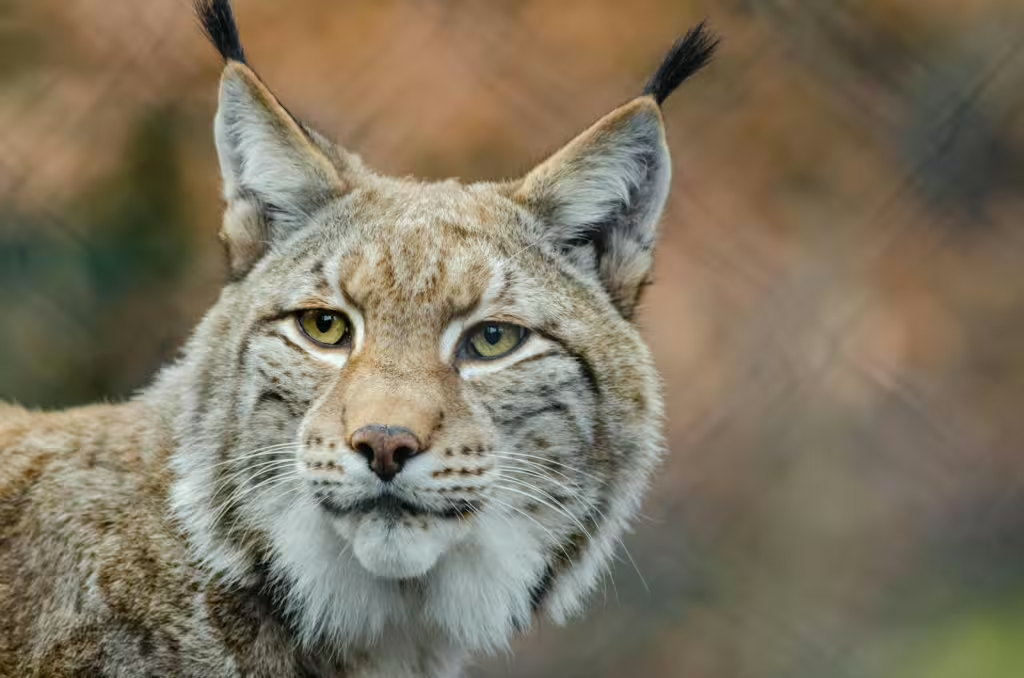
Sand Cat (Felis margarita)
Habitat: Deserts of North Africa, the Middle East, and Central Asia
Adaptations: Furry feet to walk on hot sand, moisture from prey
Role in Ecosystem: Controls rodent and insect populations in arid zones
One of the smallest wild cats on our list, the Sand Cat is a master of desert survival tactics. This tiny feline requires no standing water to drink, as it obtains all the moisture it needs from its food. Despite its resilience in terms of desert survival, habitat degradation and human encroachment continue to threaten its future. Unfortunately, the plight of the Sand Cat is the same as many of the plants and animals we discuss on this site. These animals have survived hardships and environmental challenges that many could not endure and yet despite millions of years of evolution, the arrival of humans have forced them to adapt in ways they never anticipated. Many cannot do so and thus, many will not survive the age of man.
Flat-headed Cat (Prionailurus planiceps)
Habitat: Wetlands of Malaysia, Thailand, and Borneo
Adaptations: Low, flat skull for aquatic hunting; backward-facing teeth
Role in Ecosystem: Aquatic predator, contributes to ecological complexity of wetlands
named for it’s uniquely-shaped skull, this bizarre-looking feline specializes is another in a collection of cats that rely on fish for most of their meals. The Flat-headed cat spends its time catching fish and amphibians, thanks to adaptations like water-resistant fur and uniquely shaped teeth. Sadly, like the Fishing Cat, it is among the most endangered small cats on this list due to rapid wetland loss.
Marbled Cat (Pardofelis marmorata)
Habitat: Southeast Asian rainforests
Adaptations: Long tail for balance, tree-dwelling habits
Role in Ecosystem: Arboreal predator, keeps populations of tree-dwelling animals in check
many people, naturalists included, often confuse these cats with clouded leopards, though the Marbled Cat is significantly smaller and more arboreal than its doppelgänger. In any case, the Marbled Cat is an equally stealthy predator that helps maintain healthy populations of birds and small mammals in the tropical forests of its home.
African Golden Cat (Caracal aurata)
Habitat: Central and West African rainforests
Adaptations: Variable coat color for camouflage; muscular build
Role in Ecosystem: Controls populations of forest rodents and birds
These aren’t exactly lions, we’re talking about, but it is an African “big cat.” Very little is known about this elusive cat species, however, making it a top priority for field biologists looking to study lower rungs on the African predation ladder. Even so, the African Golden Cat, often known as the African forest cat, is rarely captured on camera. Nevertheless, as a top predator in its range, its mere presence is a sign of forest health.
Chinese Mountain Cat (Felis bieti)
Habitat: Tibetan Plateau
Adaptations: Thick coat and tail, adapted to high altitudes
Role in Ecosystem: Predator of pikas and rodents, part of fragile plateau ecosystems
Endemic to China and seldom seen outside of its ecosystem, the Chinese mountain cat is well adapted to the cold, arid environment of the plateau. In terms of conservation, the Chinese Mountain Cat is considered vulnerable, and this is largely due to habitat degradation and rodent poisoning campaigns against it.
Rusty-Spotted Cat (Prionailurus rubiginosus)
Habitat: Forests and grasslands of India and Sri Lanka
Adaptations: Tiny size, arboreal ability, incredible agility
Role in Ecosystem: Predator of insects, birds, and rodents
Weighing as little as 2 pounds, the diminutive, Rusty-Spotted Cat is the world’s smallest wild cat. Tiny though it may be, its small size belies its agility and hunting prowess. It is nocturnal and reclusive, rarely witnessed even by those who care to find it, but plays a key role in controlling small prey populations.
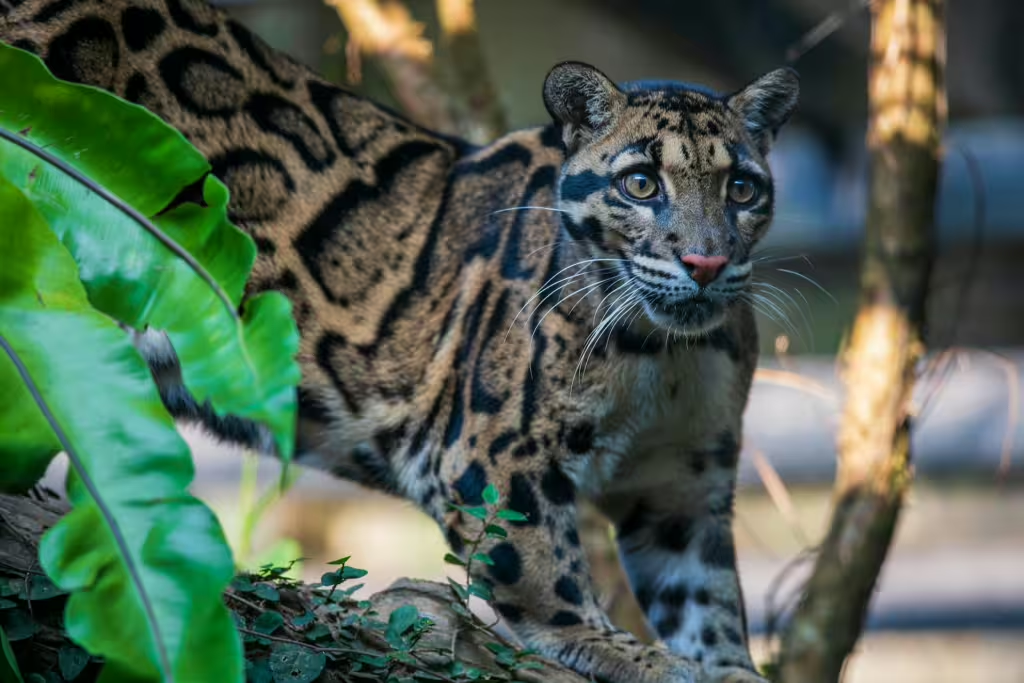
Serval (Leptailurus serval)
Habitat: Sub-Saharan Africa
Adaptations: Long legs and large ears for hunting in tall grass
Role in Ecosystem: Controls populations of rodents, birds, and frogs in wetlands and grasslands
Though not as rare as some other cats on this list, servals are increasingly threatened in parts of their Sub-Saharan home. Nevertheless, their powerful vertical leaps allow them to snatch birds mid-flight, making them a vital part of population control within their range. That role is vital in both dry and wet savannah ecosystems.
Snow Leopard (Panthera uncia)
Habitat: High mountains of Central Asia
Adaptations: Thick fur, powerful limbs, long tail for balance
Role in Ecosystem: Apex predator in alpine environments, keystone species
We couldn’t do a list like this without showing one “big-ticket” item of sorts. The Snow Leopard has long been a symbol of endangered species the world over. Overhunting and habitat destruction have done a. number on its numbers, yet conservation efforts have helped it to stay afloat. Though larger than others on this list, the Snow Leopard is incredibly elusive. Known as the “ghost of the mountains,” its purpose is to regulate populations of ibex and other mountain herbivores, making it essential for maintaining alpine biodiversity.
The Conservation Challenge
Many of these rare wild cats are facing grave threats from human beings:
- Habitat Destruction: Deforestation, urban sprawl, and agriculture greatly reduce their living spaces; which are crucial for wild cats as many of them need a wide range to hunt and breed successfully.
- Poaching and Illegal Trade: Pelts, bones, and live animals are still trafficked illegally, even though conservation awareness is at an all-time high thanks to the Internet..
- Conflict with Humans: Cats often come into conflict with farmers and herders, who don’t understand how vital they are to the health of their homelands.
Despite these challenges, hope remains. Conservation efforts, including camera trap monitoring, habitat corridors, anti-poaching patrols, and local community engagement, are making a difference for these cats in many ways.
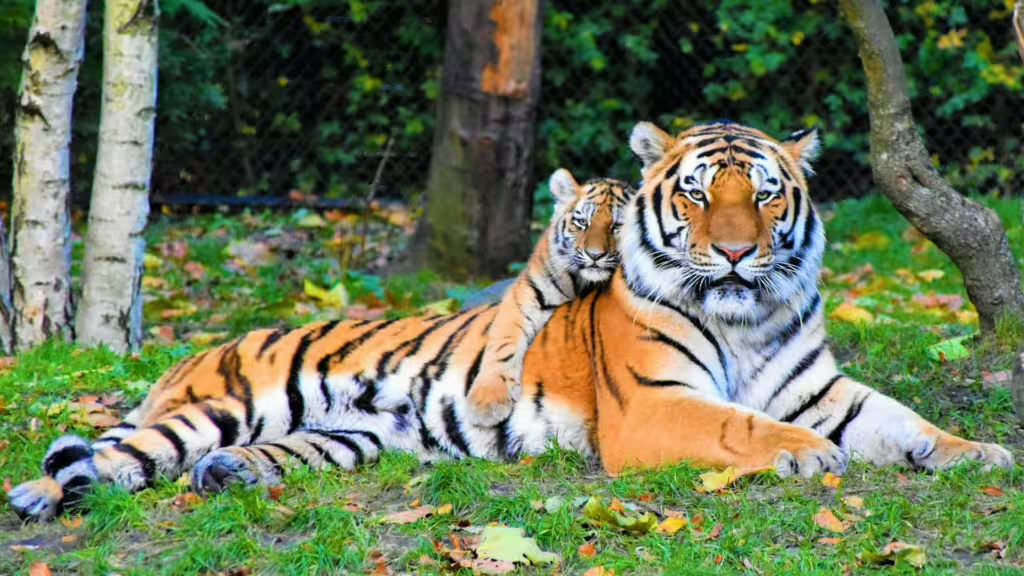
True Investigator Says…
As you can see, even the rarest wild cats on the planet can be vital parts of their ecosystems. All of them are beautiful, mysterious creatures in their own right, just as amazing as the tigers or lions we know and love. These cats are the silent shadows that shape the health of forests, deserts, wetlands, and mountains. In preserving them, we preserve entire ecosystems and ultimately, ourselves.
Discover more from TrueInvestigator
Subscribe to get the latest posts sent to your email.
